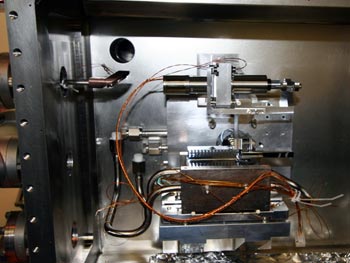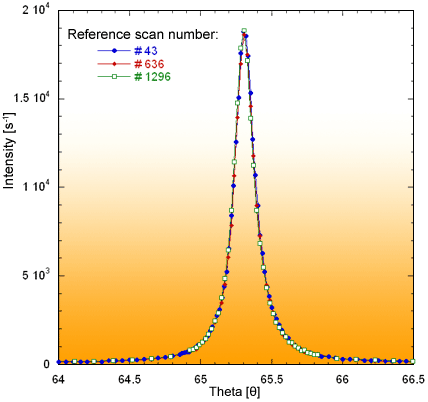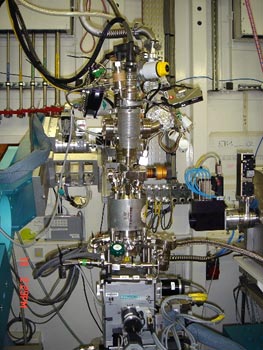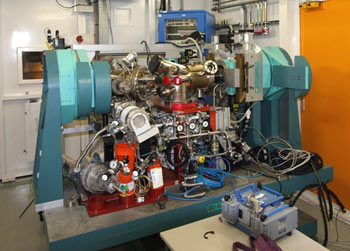- Home
- News
- Spotlight on Science
- News from ID03,...
News from ID03, the Surface X-ray Diffraction Beamline
27-11-2006
For twelve years ID03 has been the centre of gravity for the European Surface X-ray Diffraction Community. An upgrade of the beamline appeared necessary to continue to fulfill this role and to satisfy future needs of the surface science research groups. After a year of intense refurbishment and rebuilding, the new and improved ID03 reopened for its User Community in August 2006.
Share
The following improvements were made to the source and optics:
- three undulators on a 10 mm gap vacuum vessel provide ID03 with an intense beam of syncrotron radiation
- the beamline is now windowless to limit the background and to preserve source coherence
- the monochromator is a liquid nitrogen cooled monolithic channel-cut Si(111) crystal able to absorb all of the thermal power emitted by the source
- a new cylindrical and bendable mirror allows the location of the focal spot to be any position along the beam path within the experimental hutches
-
the monochromator and mirror designs results in improved beam stability at the sample position
 |
|
ID03 monolithic Si (111) single-crystal monochromator. |
The new optics affords a 5-fold increase in the available flux. First measurements have shown a flux of 2 x 1013 ph/sec at 200 mA for a spot size of 40 x 30 microns (H x V) at 17.14 keV. The absence of windows allows the preservation of the source coherence. The photon energy is fully tunable in the 5-24 keV range giving the possibility of performing resonance diffraction experiments.
The beamline has two new experimental hutches that are larger than before. The diffractometers were designed specifically for surface crystallographic studies. Soon we will also have new driving electronics and detection systems. They will allow faster movement, counting during arbitrary scans in the reciprocal space and fast mapping. Their implementation is planned for 2007.
The instrumentation is best suited to the following class of experiments:
- Surface crystallography (UHV, and non UHV)
- In situ characterisation of surface dynamical phenomena such as homoepitaxy, heteroepitaxy and phase transitions
- Structural and magnetic characterisation of metallic thin films using diffraction and MOKE
- Characterisation of reaction at surfaces, e.g. catalysis
- Surface morphology studies by GISAXS
- Coherence diffraction for both morphological 3D shape reconstruction of nanocrystals and surface self-correlation spectroscopy
More information concerning the beamline can be found on the ID03 web page. Questions about experiment feasibility can be directly addressed to the scientific personnel: R. Felici, scientist in charge of the beamline, and D. Wermeille, beamline scientist.
 |
Scans of a fractional order peak of the C60 on Au(111) 2√3x2√3-R30° recontruction. This peak was used as a reference to monitor the beamline stability and the degradation of the surface. The peak intensity remained stable for 4 days, the duration of an experiment. |
 |
Batch reactor on EH1 diffractometer. |
 |
EH2 horizontal geometry diffractometer with UHV chamber. |



